What are the 20 best places to visit in New Mexico, according to locals? Answer is – New Mexico, the “Land of Enchantment,” offers diverse landscapes and cultural experiences. Locals recommend visiting White Sands National Park for its otherworldly gypsum dunes, Taos Pueblo for its ancient adobe architecture, and Carlsbad Caverns National Park for its subterranean wonders. Santa Fe, the state capital, is known for its vibrant arts scene and historic plaza. Other popular destinations include Bandelier National Monument, the Turquoise Trail, and the quirky town of Truth or Consequences. Whether you’re interested in outdoor adventures, cultural immersion, or simply soaking up the unique atmosphere, New Mexico has something to offer everyone.
Summary
- Natural Wonders: White Sands, Carlsbad Caverns, Bandelier
- Cultural Experiences: Taos Pueblo, Santa Fe, Acoma Pueblo
- Historic Sites: Chaco Culture, El Morro, Fort Union
- Outdoor Adventures: Gila Wilderness, Rio Grande Gorge, Sangre de Cristo Mountains
- Quirky Towns: Truth or Consequences, Madrid, Chimayo
- Scenic Drives: Turquoise Trail, High Road to Taos, Enchanted Circle
- Hidden Gems: Kasha-Katuwe Tent Rocks, City of Rocks, El Malpais
Best Places to Visit in New Mexico
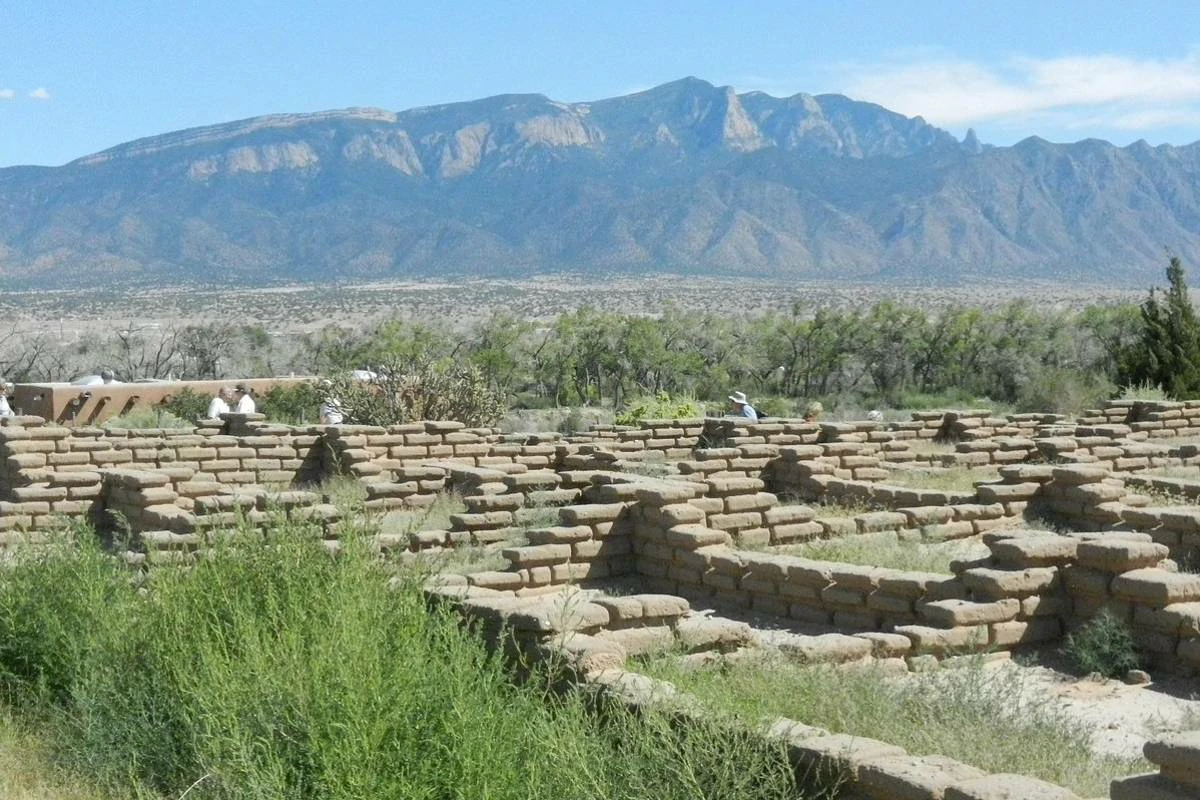
New Mexico, affectionately known as the “Land of Enchantment,” is a treasure trove of natural wonders, cultural richness, and historical significance.
Its unique blend of Native American, Hispanic, and Anglo influences creates a tapestry of experiences that captivate visitors from around the globe.
From the otherworldly landscapes of White Sands National Park to the ancient dwellings of Taos Pueblo, New Mexico offers a diverse range of attractions that cater to every interest.
Why Trust Local Recommendations?
While guidebooks and travel websites can provide valuable information, there’s no substitute for the insights of those who call New Mexico home.
Locals possess an intimate knowledge of hidden gems, off-the-beaten-path destinations, and authentic experiences that often go unnoticed by tourists.
They can offer insider tips on the best times to visit certain attractions, lesser-known hiking trails, and where to find the most delectable regional cuisine.
“New Mexico is a place of endless discovery,” says Rebecca Latham, a lifelong resident of Santa Fe and founder of the popular travel blog “The Enchanting Explorer.” “Locals have a deep appreciation for the land, its history, and its people. Their recommendations are rooted in a genuine desire to share the true essence of New Mexico with others.”
By tapping into the wisdom of locals, you can unlock a more enriching and personalized travel experience. Their firsthand knowledge can lead you to hidden oases, vibrant cultural events, and local artisans whose creations embody the spirit of the Southwest.
Natural Wonders
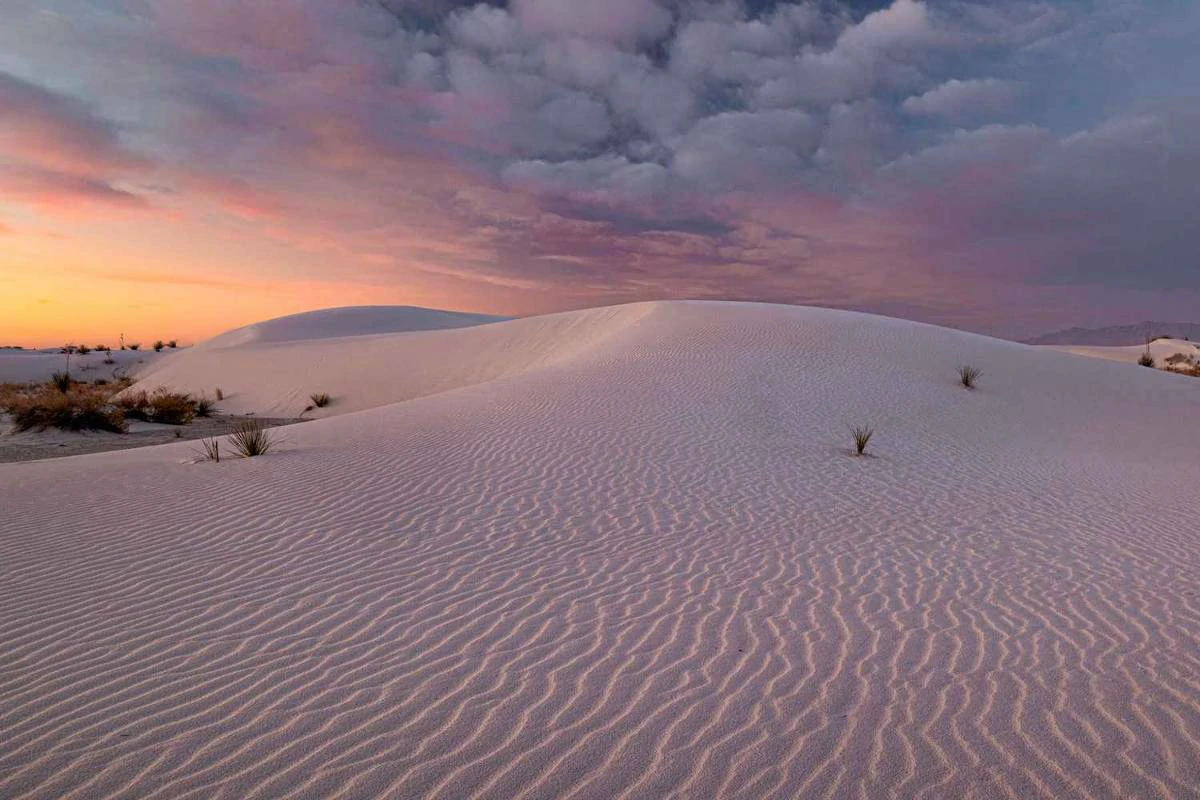
New Mexico’s diverse landscapes offer a wealth of natural wonders that leave visitors in awe. From the glistening white dunes of White Sands to the subterranean depths of Carlsbad Caverns, the state’s geological diversity is on full display.
1. White Sands National Park
Imagine a vast expanse of gleaming white sand dunes stretching as far as the eye can see. This is White Sands National Park, a surreal landscape formed by gypsum crystals.
Unlike typical sand, these dunes are cool to the touch, inviting visitors to sled down their slopes or simply bask in their otherworldly beauty.
“The unique composition of the sand and the ever-shifting dunes create an environment unlike any other,” says Dr. Penelope Boston, a renowned cave and astrobiology researcher who has extensively studied the park’s ecosystem. “It’s a place where science and wonder intersect.”
For a truly immersive experience, consider camping under the stars at one of the park’s backcountry campsites. The night sky above White Sands is a breathtaking spectacle, with countless stars twinkling against the backdrop of the dunes.
2. Carlsbad Caverns National Park
Venture beneath the surface and discover a hidden world of natural artistry at Carlsbad Caverns National Park. Here, a vast network of limestone caves adorned with intricate formations awaits exploration.
From the colossal Big Room, one of the largest cave chambers in North America, to the delicate soda straws and flowstones, each passage reveals a new marvel.
“Carlsbad Caverns is a testament to the power of water and time,” explains Dr. Victor Polyak, a geologist and cave expert. “The slow drip of mineral-rich water over millennia has sculpted these awe-inspiring formations.”
Take a guided tour to learn about the cave’s geology and history, or embark on a self-guided exploration to uncover its secrets at your own pace. Don’t miss the nightly bat flight program, where thousands of bats emerge from the cave at dusk in a spectacular display.
3. Bandelier National Monument
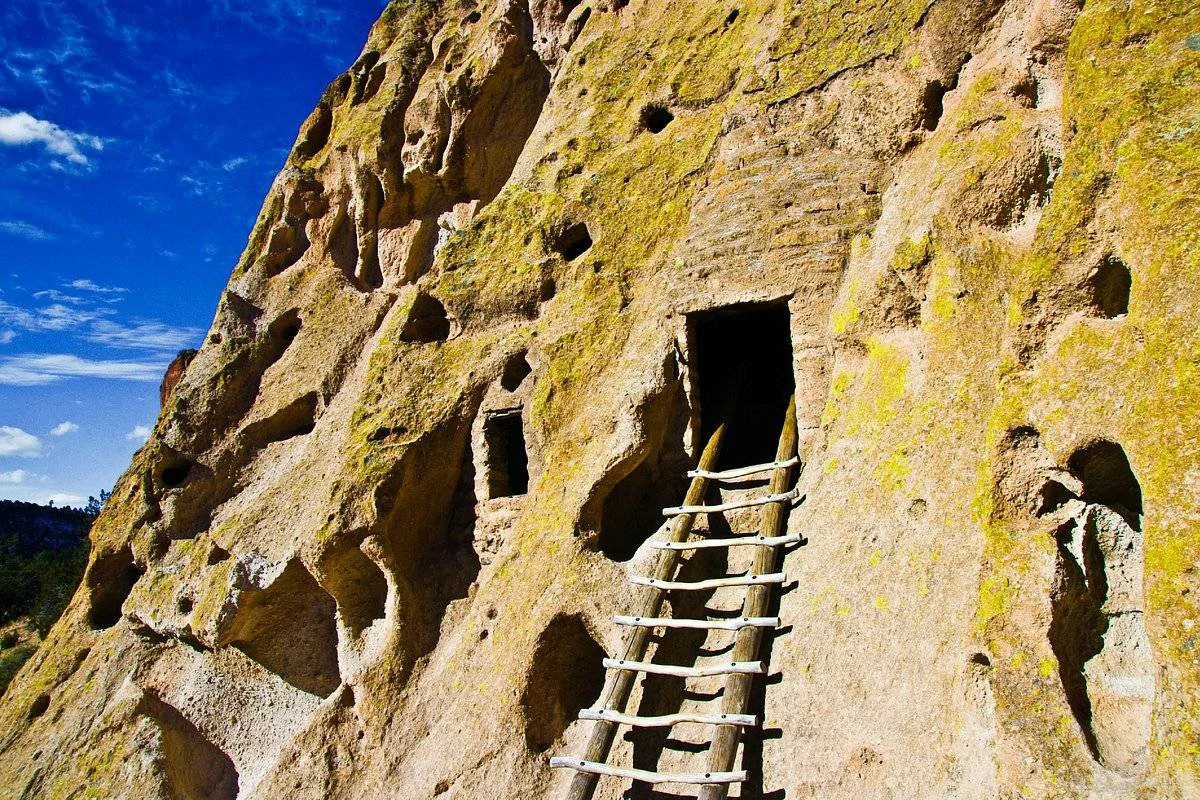
Step back in time at Bandelier National Monument, where ancestral Pueblo people carved their homes into the cliffs of Frijoles Canyon over 11,000 years ago.
Explore the well-preserved ruins, climb ladders to reach cavates (cave dwellings), and hike through the canyon’s scenic trails.
“Bandelier offers a glimpse into the lives of the people who thrived in this harsh environment,” says Dr. Patricia Gilman, an archaeologist who has dedicated her career to studying the Ancestral Puebloans. “Their ingenuity and resourcefulness are truly remarkable.”
Don’t miss the Alcove House, a challenging climb that rewards you with panoramic views of the canyon and the surrounding landscape.
4. Kasha-Katuwe Tent Rocks National Monument
Prepare to be amazed by the unique geological formations at Kasha-Katuwe Tent Rocks National Monument.
Here, towering cone-shaped rock formations, sculpted by volcanic eruptions and erosion, resemble a landscape from another planet.
“The Tent Rocks are a testament to the dynamic forces that have shaped this region over millions of years,” says Dr. Karl Karlstrom, a geologist who has extensively studied the monument’s geology. “They are a reminder of the Earth’s constant evolution.”
Hike through slot canyons, marvel at the towering hoodoos, and soak in the panoramic views from the top of the mesa.
5. Gila Wilderness
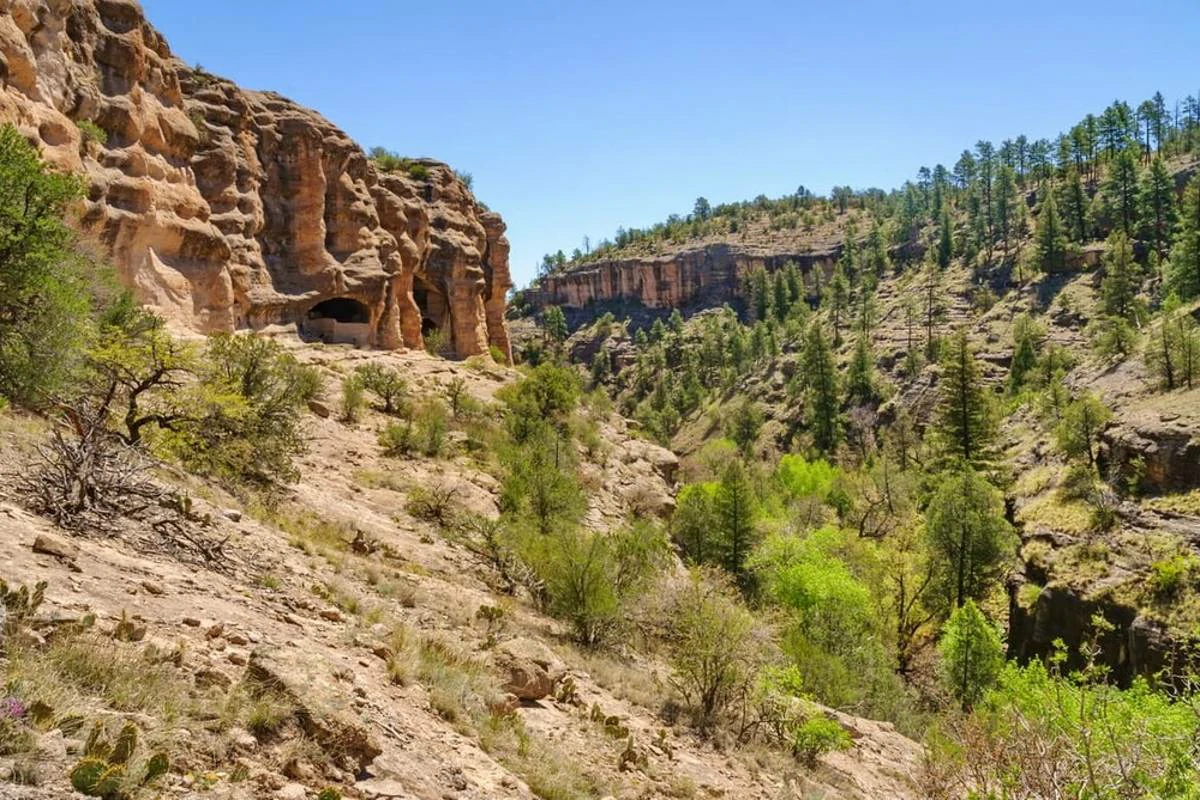
For those seeking a true wilderness experience, the Gila Wilderness beckons. This vast expanse of rugged mountains, deep canyons, and pristine rivers offers endless opportunities for exploration and adventure.
“The Gila is a place where you can truly disconnect from the modern world and reconnect with nature,” says Dave Foreman, a renowned conservationist and co-founder of the Rewilding Institute. “It’s a place of solitude, challenge, and breathtaking beauty.”
Hike through the Gila Cliff Dwellings National Monument, soak in the hot springs, or embark on a multi-day backpacking trip through the Gila National Forest.
6. Rio Grande Gorge
The Rio Grande Gorge is a testament to the power of water to shape the landscape. This deep chasm, carved by the Rio Grande River over millions of years, offers stunning views of the surrounding mountains and the river below.
“The gorge is a popular destination for hikers, rafters, and birdwatchers,” says John Olivas, a local guide and outdoor enthusiast. “It’s a place where you can experience the raw power of nature firsthand.”
Hike along the rim, cross the Rio Grande Gorge Bridge, or take a whitewater rafting trip through the canyon’s rapids.
Cultural Experiences
New Mexico’s cultural landscape is as diverse as its natural wonders. From ancient Native American traditions to Spanish colonial influences and a thriving contemporary arts scene, the state offers a rich tapestry of experiences for those seeking cultural immersion.
1. Taos Pueblo
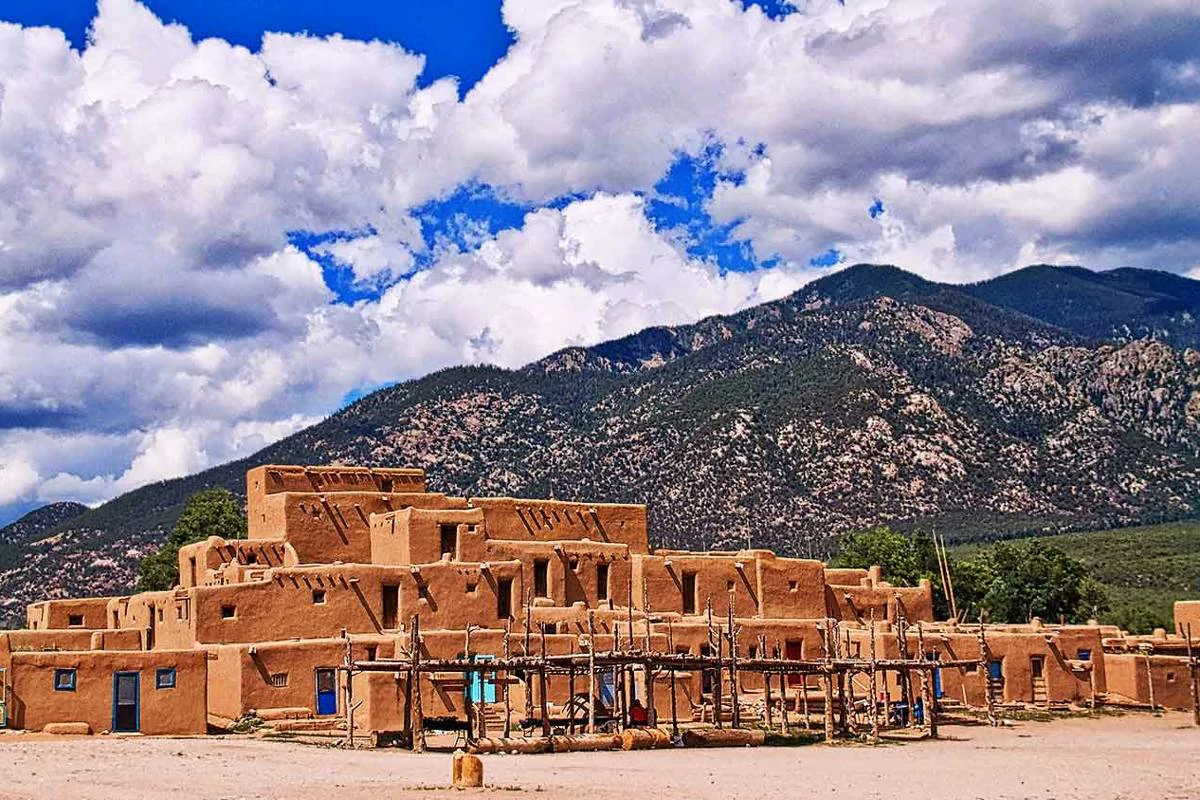
Step into a living testament to a thousand years of tradition at Taos Pueblo. Nestled at the base of the Sangre de Cristo Mountains, this UNESCO World Heritage Site is one of the oldest continuously inhabited communities in the United States.
Its multi-story adobe buildings, constructed entirely of earth and straw, stand as a testament to the ingenuity and resilience of the Taos people.
“Taos Pueblo is not just a historical site; it’s a living, breathing community,” says Patricia Michaels, a Taos Pueblo fashion designer and artist. “Our traditions, language, and connection to the land are woven into the very fabric of our lives.”
Visitors can explore the pueblo’s unique architecture, learn about traditional crafts, and witness ceremonial dances. The Taos people welcome guests to share in their rich cultural heritage, offering a glimpse into a way of life that has endured for centuries.
2. Santa Fe
Santa Fe, the state capital, is a vibrant hub of art, history, and culture. Its historic plaza, lined with adobe buildings and shaded by cottonwood trees, is the heart of the city.
Here, visitors can explore art galleries, museums, and historic landmarks like the Palace of the Governors, the oldest continuously occupied public building in the United States.
“Santa Fe is a city that celebrates creativity in all its forms,” says Elaine Ritchel, a local artist and gallery owner. “From traditional Native American crafts to cutting-edge contemporary art, there’s something to inspire everyone.”
Santa Fe’s culinary scene is equally diverse, with a unique blend of Native American, Spanish, and Mexican influences. Savor the flavors of green chile stew, blue corn enchiladas, and sopapillas, a fluffy fried pastry drizzled with honey.
3. Acoma Pueblo
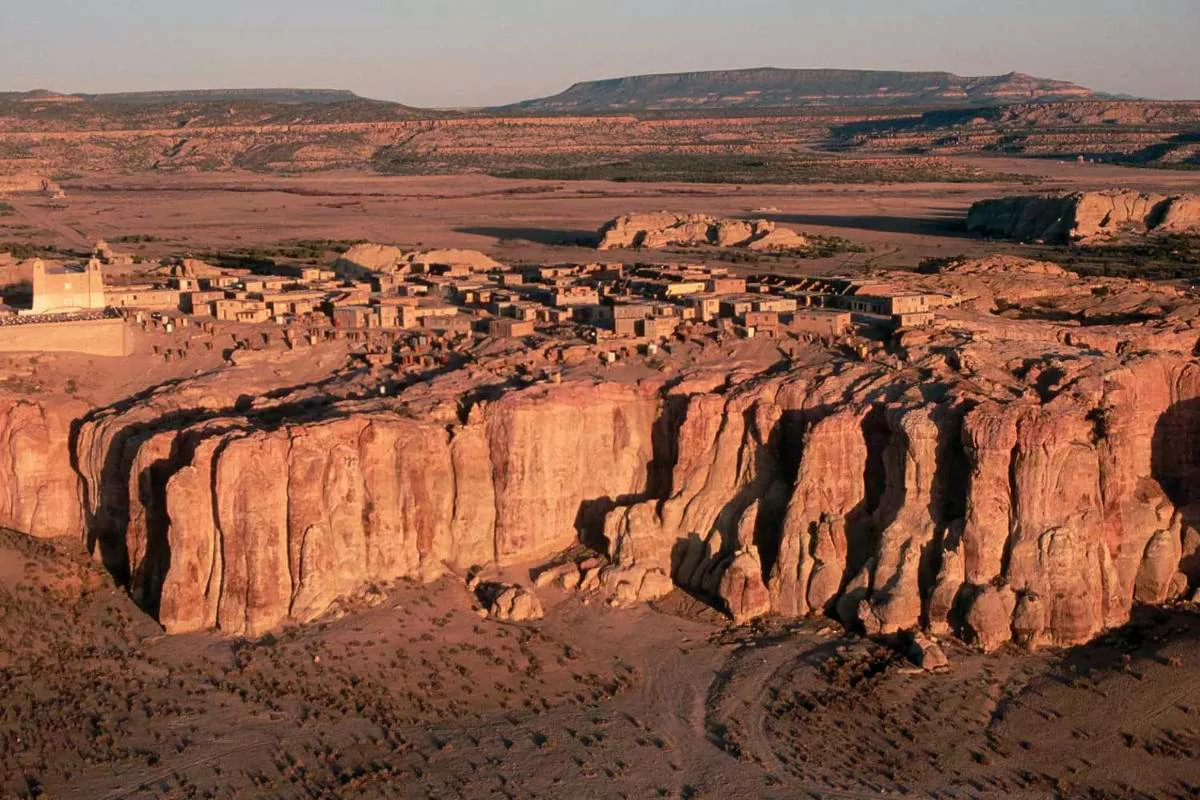
Perched atop a 367-foot mesa, Acoma Pueblo is a breathtaking sight to behold. Known as the “Sky City,” this ancient community has been continuously inhabited for over a thousand years.
Its adobe buildings, nestled among the rock formations, offer panoramic views of the surrounding desert landscape.
“Acoma Pueblo is a place of deep spiritual significance,” says Melvin Juanico, a tribal elder and cultural interpreter. “Our ancestors chose this mesa as a place of refuge and connection to the natural world.”
Visitors can take a guided tour to learn about the pueblo’s history, culture, and unique architecture. The Acoma people are known for their exquisite pottery, which is still made using traditional techniques passed down through generations.
4. Indian Pueblo Cultural Center
The Indian Pueblo Cultural Center in Albuquerque offers a comprehensive introduction to the diverse cultures of New Mexico’s 19 Pueblos.
Through exhibits, demonstrations, and cultural events, visitors can learn about the history, traditions, and contemporary life of the Pueblo people.
“The Indian Pueblo Cultural Center is a place where we can share our stories and connect with people from all walks of life,” says Curtis Trujillo, a cultural educator at the center. “We hope that our visitors will leave with a deeper understanding and appreciation for our unique heritage.”
The center’s museum showcases a vast collection of Pueblo artifacts, including pottery, textiles, and jewelry. Visitors can also enjoy traditional dances, storytelling, and hands-on workshops.
5. El Rancho de las Golondrinas
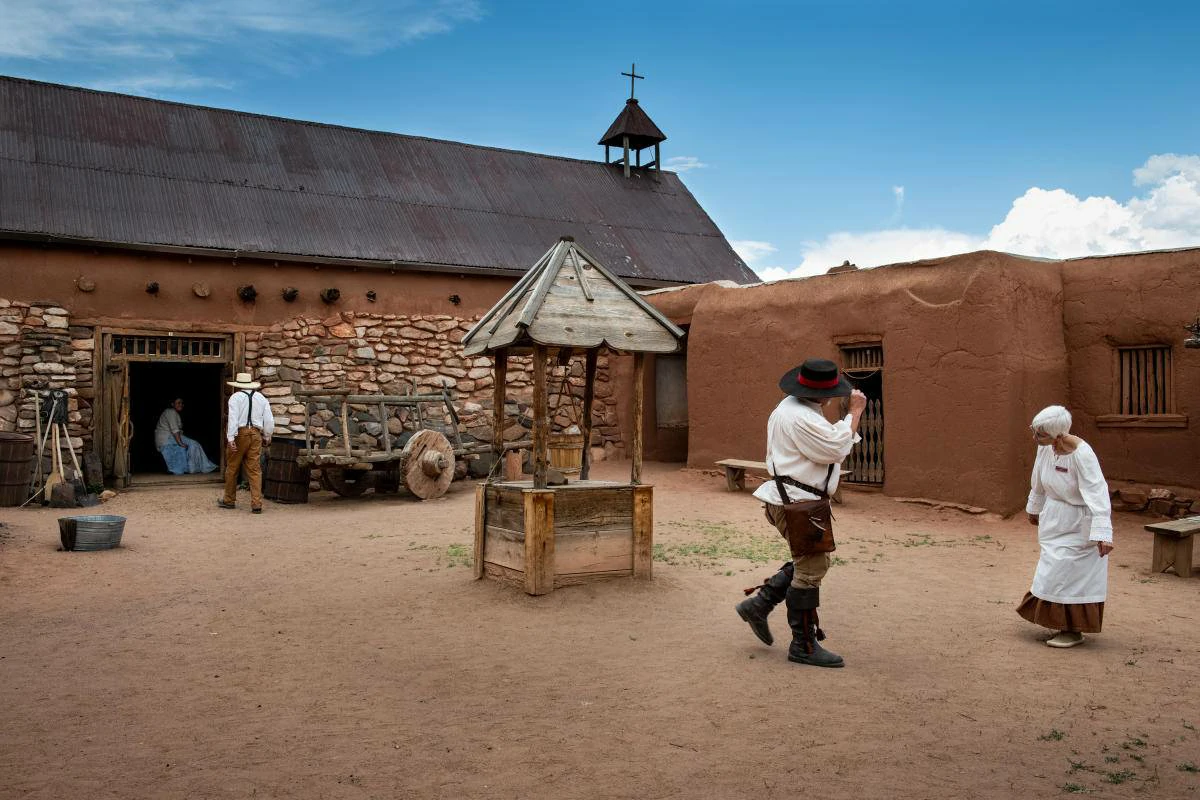
Step back in time at El Rancho de las Golondrinas, a living history museum that recreates life in 18th- and 19th-century New Mexico.
Explore traditional adobe homes, watch demonstrations of blacksmithing and weaving, and enjoy traditional music and dance performances.
“El Rancho de las Golondrinas is a place where we can bring history to life,” says Maggie Toulouse Oliver, a historical interpreter at the museum. “We want our visitors to feel like they’ve stepped back in time and experience the sights, sounds, and smells of the past.”
The museum hosts a variety of special events throughout the year, including festivals, reenactments, and workshops.
6. Santuario de Chimayo
Santuario de Chimayo is a small adobe church nestled in the foothills of the Sangre de Cristo Mountains. It’s a place of pilgrimage for people of all faiths, drawn by the belief in the healing powers of the earth found in the church’s “el pocito,” a small pit of holy dirt.
“Santuario de Chimayo is a place of peace, reflection, and hope,” says Father Julio Gonzales, the church’s rector. “People come here to seek healing, both physical and spiritual.”
The church’s interior is adorned with colorful folk art and ex votos, offerings left by pilgrims in gratitude for answered prayers. Visitors can take a self-guided tour, attend mass, or simply sit in quiet contemplation.
Historic Sites
New Mexico’s historical sites offer a fascinating glimpse into the diverse cultures that have shaped the region over centuries. From ancient Puebloan ruins to Spanish colonial outposts and Wild West forts, these sites provide a rich tapestry of human stories etched into the landscape.
1. Chaco Culture National Historical Park
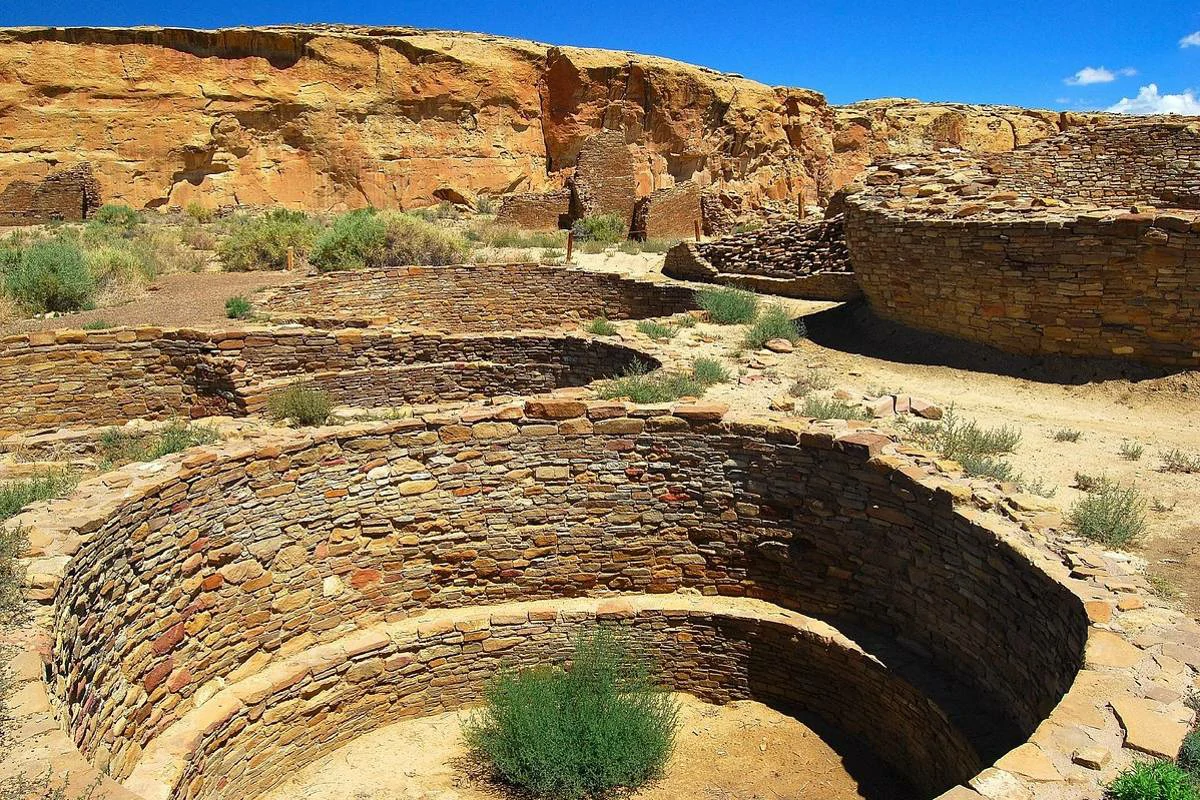
Venture into the heart of Chaco Canyon and discover a remarkable testament to the ingenuity and cultural complexity of the Ancestral Puebloans. This UNESCO World Heritage Site preserves the largest concentration of pre-Columbian ruins in North America.
Explore the intricate masonry of Pueblo Bonito, the largest Great House, or marvel at the astronomical alignments of Casa Rinconada, a ceremonial kiva.
“Chaco Canyon is a place of deep spiritual significance and a window into a sophisticated ancient civilization,” says Dr. Ruth Van Dyke, a renowned archaeologist who has dedicated her career to studying the Chacoan people. “Its architectural achievements and cultural practices continue to inspire awe and wonder.”
Hike through the canyon’s scenic trails, attend a ranger-led talk, or join a night sky program to witness the breathtaking display of stars above this ancient landscape.
2. El Morro National Monument
Journey to El Morro National Monument, where a towering sandstone bluff known as Inscription Rock bears witness to centuries of human history.
Explore the inscriptions left by Ancestral Puebloans, Spanish explorers, and American settlers, each etching their mark on this natural canvas.
“Inscription Rock is a living document of the diverse cultures that have passed through this region,” says Dr. Joseph Suina, a cultural anthropologist who has studied the inscriptions extensively. “It tells a story of exploration, encounter, and adaptation.”
Hike to the top of the mesa for panoramic views of the surrounding landscape, visit the Ancestral Puebloan ruins at Atsinna Pueblo, or simply admire the intricate petroglyphs and inscriptions that adorn the rock face.
3. Fort Union National Monument
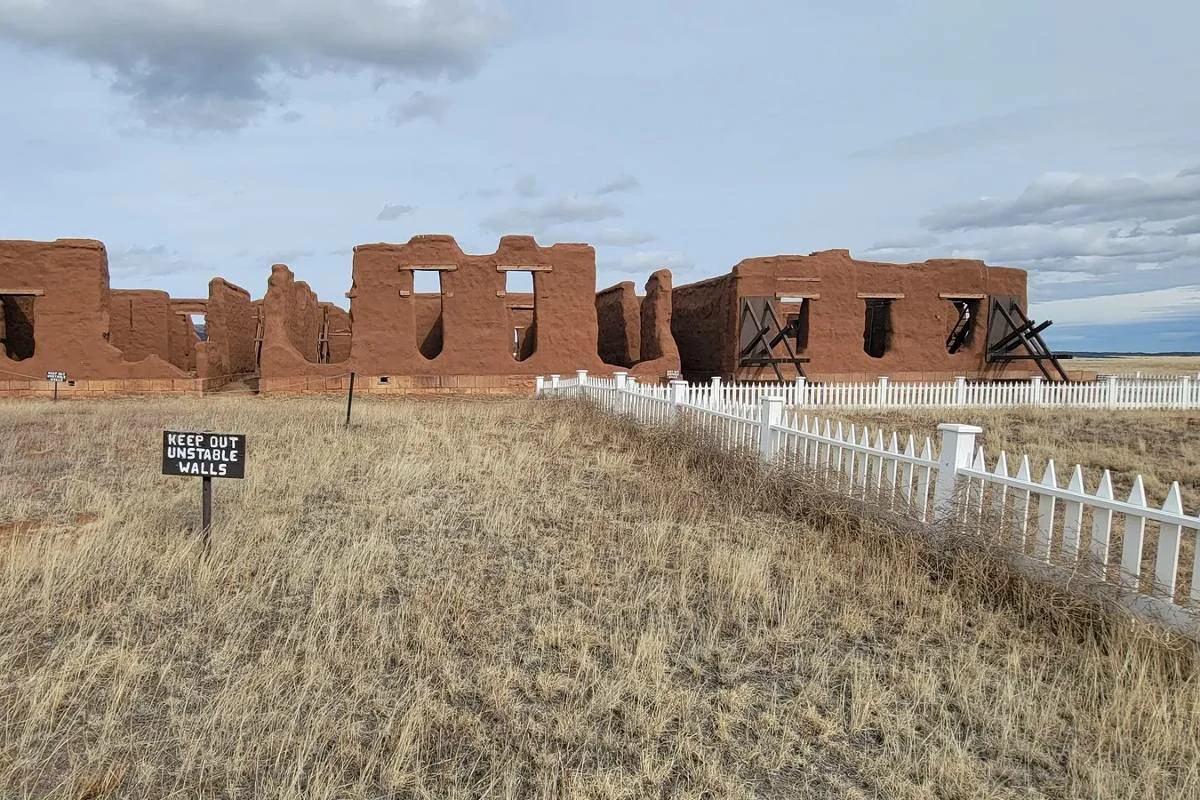
Step into the Wild West at Fort Union National Monument, where the ruins of a 19th-century military fort stand as a reminder of the frontier era.
Explore the remnants of barracks, storehouses, and officers’ quarters, and imagine the daily life of the soldiers and civilians who once called this place home.
“Fort Union was a vital hub for trade, transportation, and military operations during the westward expansion of the United States,” says Dr. Dwight Pitcaithley, a historian and former chief historian of the National Park Service. “It played a pivotal role in shaping the history of the Southwest.”
Take a guided tour to learn about the fort’s history and significance, or explore the grounds at your own pace. Don’t miss the nearby Santa Fe Trail, a historic trade route that once connected Missouri to New Mexico.
4. Pecos National Historical Park
Pecos National Historical Park tells the story of a crossroads of cultures, where Native American, Spanish colonial, and American influences converged.
Explore the ruins of Pecos Pueblo, a thriving Ancestral Puebloan community that once housed over 2,000 people, and visit the 17th-century Mission Nuestra Señora de los Ángeles de Porciúncula, a testament to Spanish colonialism.
“Pecos is a place where you can trace the threads of history that have woven together to create the unique cultural fabric of New Mexico,” says Dr. Estevan Rael-Gálvez, a historian and expert on New Mexico’s colonial history. “It’s a place where the past comes alive.”
Hike through the park’s scenic trails, visit the museum to learn more about the park’s rich history, or attend one of the many cultural events and demonstrations held throughout the year.
5. Coronado Historic Site

Follow in the footsteps of Francisco Vásquez de Coronado, the Spanish conquistador who led an expedition through the Southwest in search of the mythical Seven Cities of Gold.
At Coronado Historic Site, you can explore the ruins of Kuaua Pueblo, where Coronado and his men spent the winter of 1540-41.
“Coronado Historic Site offers a glimpse into the early days of Spanish exploration and the encounter between European and Native American cultures,” says Dr. Richard Flint, a historian who has written extensively about Coronado’s expedition. “It’s a place where you can imagine the challenges and triumphs of those who ventured into the unknown.”
Visit the museum to learn about Coronado’s expedition and the impact it had on the region, or hike to the top of the mesa for panoramic views of the Rio Grande Valley.
Outdoor Adventures
New Mexico’s diverse landscapes beckon outdoor enthusiasts with a wealth of adventures. From the towering peaks of the Sangre de Cristo Mountains to the tranquil waters of Elephant Butte Lake, the state offers a natural playground for hikers, campers, skiers, anglers, and water sports enthusiasts alike.
1. Sangre de Cristo Mountains
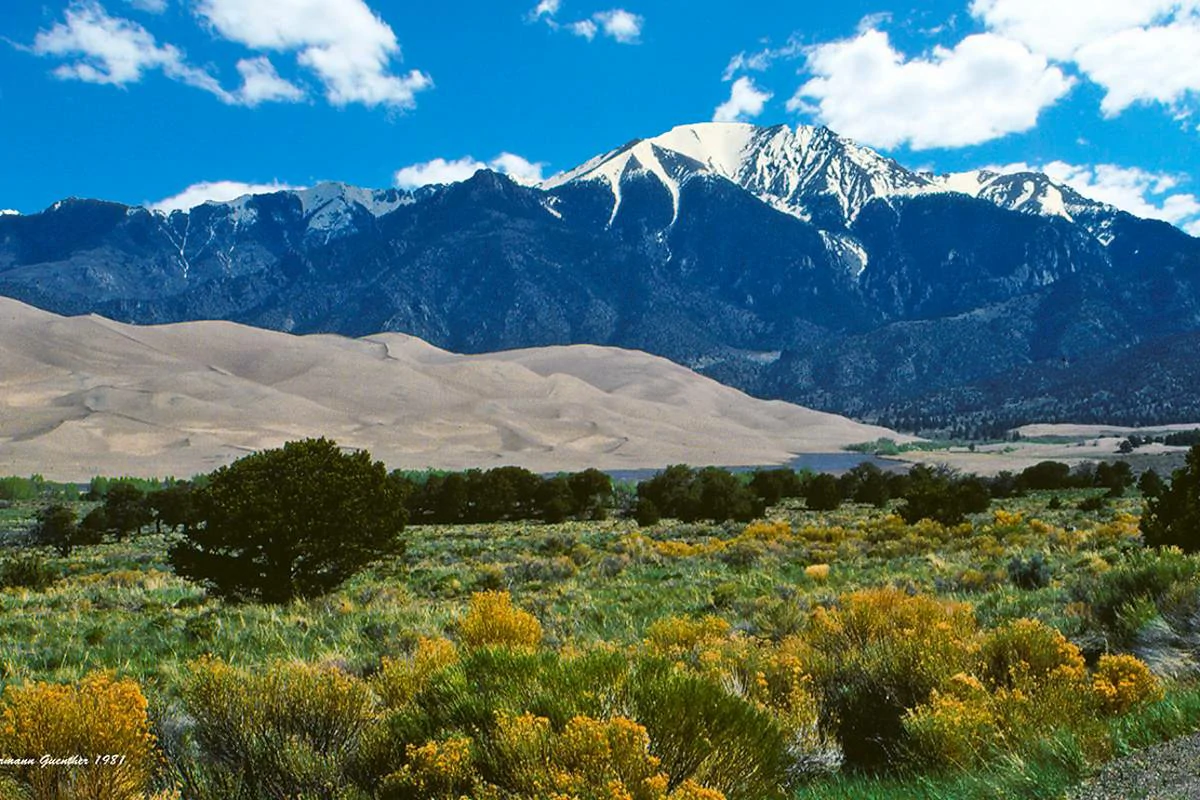
The Sangre de Cristo Mountains, part of the southern Rocky Mountains, dominate the northern landscape of New Mexico. Their rugged peaks, pristine alpine lakes, and lush forests offer endless opportunities for outdoor recreation.
“The Sangre de Cristos are a hiker’s paradise,” says Peter Lipscomb, a seasoned mountaineer and author of the guidebook “Hiking the Sangre de Cristo Mountains.” “From challenging summits to leisurely strolls through meadows, there’s a trail for every skill level.”
Popular hikes include Wheeler Peak, the highest point in New Mexico, and the Williams Lake Trail, which leads to a picturesque alpine lake nestled among the peaks. In winter, the mountains transform into a winter wonderland, with several ski resorts offering downhill and cross-country skiing, snowboarding, and snowshoeing.
For a more immersive experience, pitch a tent at one of the many campgrounds nestled in the mountains. The Sangre de Cristos offer a range of camping options, from developed campgrounds with amenities to primitive backcountry sites.
2. Valles Caldera National Preserve
Step into a geological wonderland at Valles Caldera National Preserve, a vast volcanic crater formed by a massive eruption over a million years ago. Explore the caldera’s diverse ecosystems, which range from grassy meadows to dense forests and geothermal hot springs.
“Valles Caldera is a living laboratory for studying volcanic processes and ecological diversity,” says Dr. Fraser Goff, a geologist with the U.S. Geological Survey. “It’s a place where you can witness the power and beauty of nature firsthand.”
Hike through the preserve’s extensive trail network, go fishing in the caldera’s streams, or soak in the healing waters of the hot springs. In winter, the caldera offers opportunities for cross-country skiing and snowshoeing.
3. Chaco Canyon
Chaco Canyon, a remote wilderness area in northwestern New Mexico, offers a unique opportunity to escape the crowds and immerse yourself in nature. Explore the canyon’s rugged landscape, hike to ancient Puebloan ruins, and experience the breathtaking dark skies above.
“Chaco Canyon is one of the best places in the world for stargazing,” says Dr. John Barentine, an astronomer and dark sky advocate. “The lack of light pollution allows you to see the Milky Way in all its glory.”
Join a ranger-led night sky program to learn about the constellations and planets, or simply lay back and enjoy the celestial show. For a more adventurous experience, backpack through the canyon’s backcountry and discover hidden archaeological sites.
4. Elephant Butte Lake State Park
Elephant Butte Lake, the largest lake in New Mexico, is a popular destination for boating, fishing, swimming, and other water sports. The lake’s warm waters and abundant sunshine make it a perfect place to relax and soak up the sun.
“Elephant Butte is a haven for water enthusiasts,” says Mark Smith, a local fishing guide and outdoor enthusiast. “Whether you’re casting a line for bass or cruising the lake in a boat, there’s something for everyone to enjoy.”
Rent a boat or kayak, go for a swim, or simply relax on the beach and enjoy the scenery. The park also offers several campgrounds, making it a great base for exploring the surrounding area.
Quirky Towns
New Mexico’s quirky towns are a testament to the state’s independent spirit and creative energy. From a spa town with an unusual name to an artist colony with a mining past, these offbeat destinations offer a glimpse into the unique character of the Southwest.
1. Truth or Consequences: A Spa Town with a Unique Name
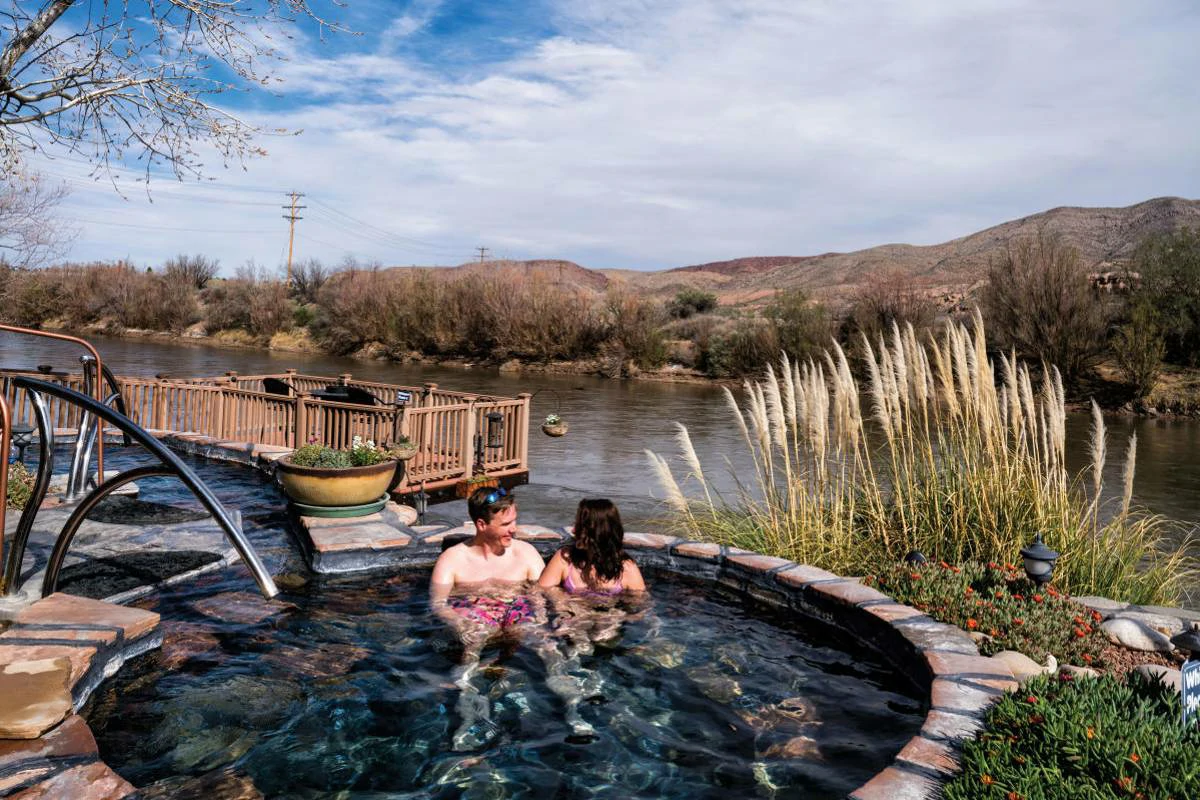
Truth or Consequences, affectionately known as T or C, earned its unusual name in 1950 when a popular radio show offered to broadcast from the first town that changed its name to match the show’s title.
The town, formerly known as Hot Springs, eagerly embraced the challenge and has since become synonymous with its quirky moniker.
“T or C is a place where you can’t help but smile,” says Mayor Linda Todd, a longtime resident of the town. “We embrace our unique identity and celebrate the things that make us different.”
T or C is home to numerous hot springs, where visitors can soak in the mineral-rich waters and enjoy the therapeutic benefits. The town also boasts a vibrant arts scene, with galleries, studios, and theaters showcasing local talent.
2. Madrid
Madrid, a former coal mining town nestled in the Ortiz Mountains, has reinvented itself as a thriving artist colony. Its eclectic mix of galleries, studios, and shops draws visitors from around the world.
“Madrid is a place where creativity flourishes,” says Sarah Smith, a local artist and gallery owner. “The town’s unique history and scenic setting provide endless inspiration for artists of all disciplines.”
Stroll through the town’s main street, admire the colorful murals and sculptures, and browse the galleries for one-of-a-kind treasures. In December, Madrid comes alive with its annual Christmas lights display, a dazzling spectacle that attracts thousands of visitors.
3. Chimayo
Chimayo, a small village nestled in the foothills of the Sangre de Cristo Mountains, is known for its rich cultural heritage and traditional crafts. The village is home to a community of weavers who create exquisite textiles using techniques passed down through generations.
“Chimayo weaving is a true art form,” says Irvin Trujillo, a master weaver and fourth-generation Chimayo resident. “Our textiles are not just beautiful; they are a reflection of our history and culture.”
Visit the Chimayo Trading Post to see weavers at work and purchase their unique creations. Chimayo is also famous for its red chile, a staple of New Mexican cuisine. Sample the local fare at one of the many restaurants or take a cooking class to learn how to prepare authentic dishes.
4. Silver City
Silver City, nestled in the Gila Wilderness, is a historic mining town that has transformed into a vibrant cultural hub. Its downtown, lined with Victorian-era buildings, is home to art galleries, antique shops, and a variety of restaurants and cafes.
“Silver City is a place where history meets creativity,” says George Julian Dworin, a local artist and musician. “The town’s rich past and scenic setting provide endless inspiration for artists of all kinds.”
Explore the town’s many museums, take a stroll through the historic district, or hike in the nearby Gila National Forest. Silver City also hosts a variety of festivals and events throughout the year, including the Silver City Blues Festival and the Gila River Festival.
Scenic Drives
New Mexico’s scenic byways offer a captivating journey through diverse landscapes, charming towns, and cultural treasures. As you cruise along these routes, you’ll be treated to breathtaking vistas, glimpses into the state’s rich history, and encounters with its unique artistic communities.
1. Turquoise Trail National Scenic Byway
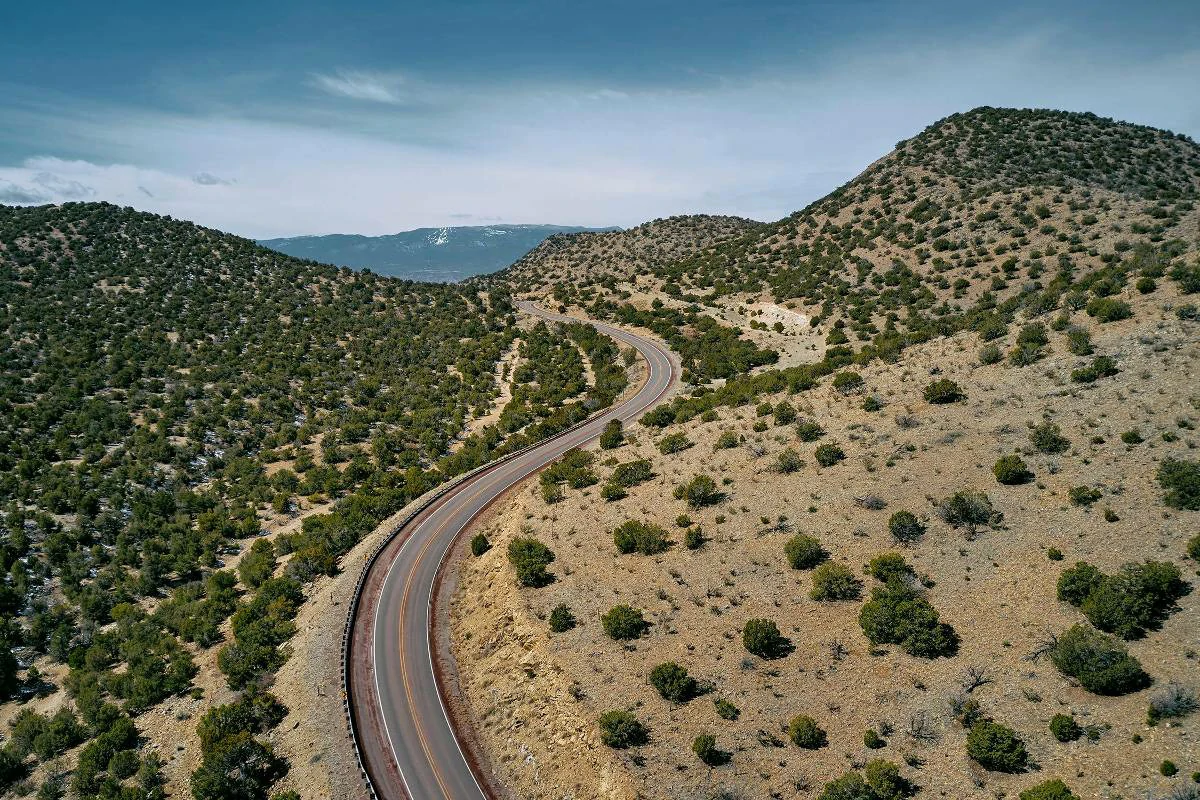
Embark on the Turquoise Trail, a 50-mile stretch of Highway 14 that winds through the heart of New Mexico’s mining country.
This scenic byway takes you through historic towns like Golden and Madrid, where you can explore old mines, browse antique shops, and learn about the region’s rich mining heritage.
“The Turquoise Trail is a journey back in time,” says Doug Pickett, owner of the Turquoise Trail Trading Post in Cerrillos. “It’s a chance to experience the authentic Old West and discover the beauty of this rugged landscape.”
Don’t miss the chance to visit the Cerrillos Hills State Park, where you can hike among ancient turquoise mines and admire the colorful rock formations. The Turquoise Trail is also home to numerous artists and craftspeople, making it a great place to find unique souvenirs and gifts.
2. High Road to Taos
The High Road to Taos, a 56-mile stretch of Highway 76, offers a scenic alternative to the main highway between Santa Fe and Taos. This winding route takes you through picturesque villages, each with its own distinct artistic flair and cultural heritage.
“The High Road is a journey through the heart of New Mexico’s artistic community,” says Agapita Lopez, a renowned santera and resident of the village of Cordova. “Each village has its own unique traditions and artistic expression.”
Visit the Santuario de Chimayo, a pilgrimage site known for its healing powers, or explore the galleries and studios of Chimayo, Cordova, and Truchas. The High Road also offers stunning views of the Sangre de Cristo Mountains, making it a popular destination for photographers and outdoor enthusiasts.
3. Enchanted Circle Scenic Byway
The Enchanted Circle Scenic Byway, an 84-mile loop through northern New Mexico, takes you through a diverse landscape of mountains, valleys, and high desert plains. This route offers a wealth of recreational opportunities, from hiking and fishing to skiing and snowboarding.
“The Enchanted Circle is a year-round playground for outdoor enthusiasts,” says John Paul Jones, a local guide and avid outdoorsman. “Whether you’re exploring the high peaks of the Sangre de Cristos or casting a line in the Red River, there’s always something to do.”
Visit the Angel Fire Resort for skiing and snowboarding, or hike to Wheeler Peak, the highest point in New Mexico. The Enchanted Circle also takes you through the charming towns of Red River and Eagle Nest, where you can enjoy local cuisine, browse art galleries, and soak in the laid-back atmosphere.
Hidden Gems
While New Mexico’s popular attractions draw crowds, the state also boasts hidden gems that offer unique experiences away from the tourist trail. These off-the-beaten-path destinations showcase the state’s natural beauty, geological wonders, and diverse wildlife.
1. City of Rocks State Park
City of Rocks State Park, located in southwestern New Mexico, is a geological wonder. Here, massive volcanic rock formations sculpted by erosion resemble a cityscape, hence the park’s name.
“City of Rocks is a unique geological formation,” says Dr. Shari Kelley, a geologist with the New Mexico Bureau of Geology and Mineral Resources. “It’s a testament to the powerful forces that have shaped this landscape over millions of years.”
Hike among the towering rock formations, explore the park’s botanical garden, or enjoy a picnic under the shade of the cottonwood trees. City of Rocks is also a popular destination for rock climbing and stargazing.
2. El Malpais National Monument
El Malpais National Monument, located in western New Mexico, is a vast expanse of lava flows, cinder cones, and ice caves. This rugged landscape offers a unique glimpse into the state’s volcanic past.
“El Malpais is a place of stark beauty and geological wonder,” says Dr. Greg Mack, a geologist and author of the book “The Geology of El Malpais.” “It’s a place where you can witness the raw power of nature firsthand.”
Explore the lava tube caves, hike through the lava fields, or visit the sandstone bluffs of La Ventana Natural Arch. El Malpais is also home to a variety of plant and animal life, making it a great place for wildlife viewing.
3. Bosque del Apache National Wildlife Refuge
Bosque del Apache National Wildlife Refuge, located along the Rio Grande River, is a haven for migratory birds. Thousands of sandhill cranes, snow geese, and other waterfowl flock to the refuge each winter, creating a spectacular sight for birdwatchers.
“Bosque del Apache is a world-class birding destination,” says Judy Liddell, a local birding guide and educator. “The sheer number and diversity of birds that visit the refuge each winter is truly amazing.”
Take a stroll along the refuge’s many trails, visit the visitor center to learn about the refuge’s history and ecology, or attend one of the many birding events held throughout the year.
Conclusion
New Mexico, the Land of Enchantment, truly lives up to its name. Its diverse landscapes, rich cultural heritage, and unique blend of traditions offer a captivating experience for every traveler.
Whether you’re drawn to the otherworldly beauty of White Sands, the ancient mysteries of Chaco Canyon, the artistic vibrancy of Santa Fe, or the rugged wilderness of the Gila, New Mexico has something to enchant and inspire you.
As you plan your journey through New Mexico, let the locals be your guides. Their insights and recommendations will lead you to hidden gems, authentic experiences, and unforgettable encounters. Whether you’re exploring the state’s natural wonders, cultural treasures, or quirky towns, you’ll discover a land of endless possibilities.
FAQs
When is the best time to visit New Mexico?
New Mexico enjoys a pleasant climate year-round, but the best time to visit depends on your interests. Spring and fall offer mild temperatures and vibrant colors, making them ideal for outdoor activities like hiking and biking. Summer is perfect for water sports and exploring the state’s many lakes and rivers. Winter brings snow to the mountains, creating a winter wonderland for skiers and snowboarders.
What are the must-try foods in New Mexico?
New Mexican cuisine is a unique blend of flavors, with its signature ingredient being the fiery chile pepper. Don’t miss the chance to savor green chile stew, enchiladas, tamales, and sopapillas. For a truly authentic experience, try dishes like posole, a traditional hominy stew, or carne adovada, a slow-cooked pork dish.
Is it safe to travel to New Mexico?
New Mexico is generally a safe destination for travelers. However, as with any travel destination, it’s important to be aware of your surroundings and take precautions. Be sure to lock your car, secure your belongings, and avoid hiking alone in remote areas.
How can I experience Native American culture in New Mexico?
New Mexico is home to 19 Pueblos, each with its own unique culture and traditions. Visit a Pueblo to learn about their history, arts, and way of life. Attend a cultural event or festival, such as the Gathering of Nations Pow Wow in Albuquerque. You can also support Native artists by purchasing their crafts directly from them.
What are some tips for planning a road trip in New Mexico?
New Mexico is a vast state with diverse landscapes, so it’s important to plan your route carefully. Allow plenty of time to explore the state’s many attractions, and be sure to pack for a variety of weather conditions. Consider renting a car with four-wheel drive if you plan to visit remote areas.






